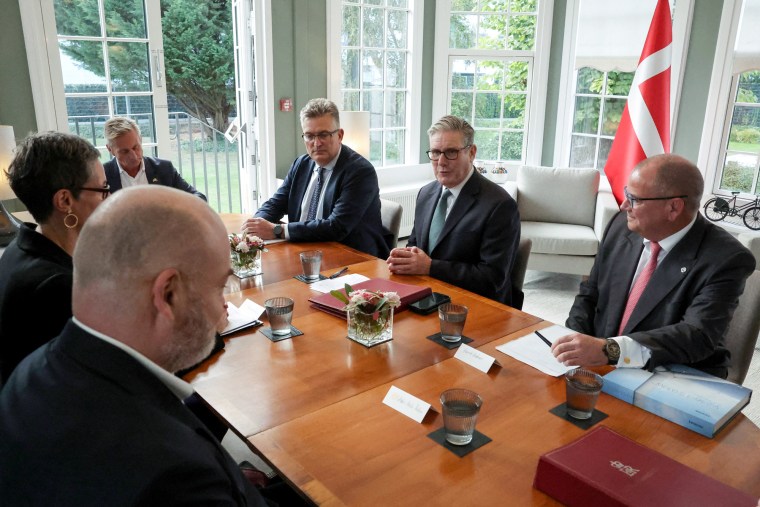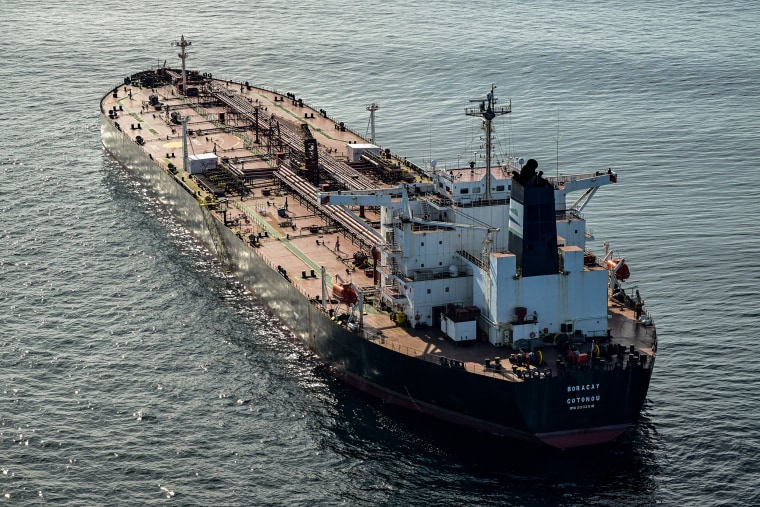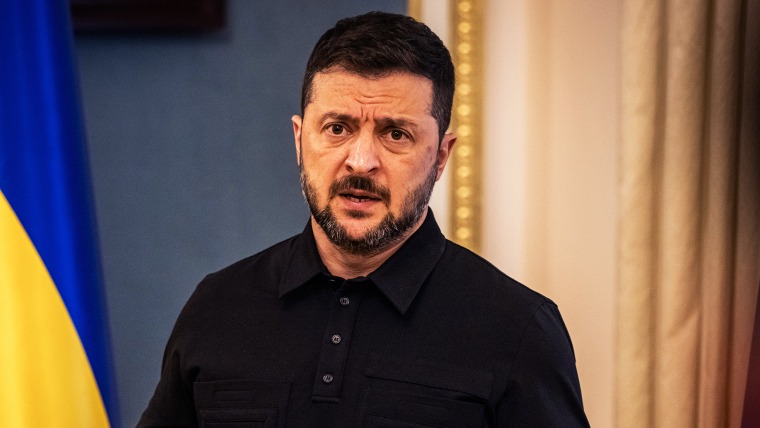LONDON — Something is shifting in the skies of Denmark.
Europe’s leaders met in Copenhagen this week with security fears pressing in from every direction and a new determination to face down what they say is a mounting threat from the Kremlin.
Fortified by intense security measures after a wave of drone incursions above airports and sensitive sites, two high-stakes summits in the Danish capital offered a mounting sense of collective clarity — and a possible solution that sounds like science fiction: a “drone wall.”
“There is only one country that are willing to threaten us, and it is Russia,” Danish President Mette Frederiksen told reporters on Wednesday, adding that Europe was in the middle of a “hybrid war.”
“I think we are in the most difficult and dangerous situation since the end of the Second World War,” she added. “I want us to rearm. I want us to buy more capabilities. I want us to innovate more.”
The advent of advanced, low-cost drones has transformed the landscape of war and security, helping Ukraine to match its far larger adversary but also leaving Western powers scrambling to adjust.
NATO launched an initial effort to bolster its flank last month after Poland shot down Russian drones that had violated its airspace. Renewed reports of drone sightings from Germany to Sweden have fueled pressure to do more.

President Donald Trump led calls to consider shooting down Russian drones and planes. Ukraine proposed a joint air defense shield with its allies. Others have floated more high-tech solutions — an Australian company said it had secured an $84 million deal from a NATO member for a new high-energy laser weapon system.
But the project gaining momentum is the “drone wall,” pitched by some as the future protector of Europe’s skies.
The idea is a priority for the bloc’s front-line security and a core element of its defenses, the E.U.’s defense commissioner, Andrius Kubilius, said last week after meeting with ministers from 10 mostly central and eastern European Union states.
European Commission President Ursula von der Leyen, NATO chief Mark Rutte and a number of E.U. leaders have now publicly backed the idea.
But no detailed plan has been laid out, and experts questioned whether Europe has the money, time or political will to make it real.
A “drone wall,” some say, may not look the way it sounds.
“It’s not going to look like a wall, that’s for sure,” said Robert Tollast, a researcher in the land warfare team at the Royal United Services Institute (RUSI), a London-based think tank.

Instead, Tollast described a potential network of small, mobile tactical radars and sensors to spot low-flying drones, linked to mobile air-defense teams and fixed batteries that use rapid cannon fire. Higher-altitude targets would require their own defenses.
One such special radar system was set up in Copenhagen to help secure the summits, after the drone incursions that have caused disruption and disquiet across the continent in recent weeks.
Establishing a system to defend a much larger area is technically possible, Tollast added, but expensive.
Kubilius acknowledged the potential mismatch in cost involved in drone defense.
“If you are using air, and air missiles from your air fighter to shoot the drone, then you are using a missile, which costs 1M, to kill the drone, which costs 10,000,” he said Friday.
But with Europe increasingly convinced that Russian President Vladimir Putin is testing their defenses and unity, some believe that may be a small price to pay to deter further Kremlin aggression.
Michael Bociurkiw, a senior fellow at the Atlantic Council, a Washington think tank, said NATO leaders must “convince their electorates on the importance of this type of spending.”
It will take “a huge percentage of their military budgets to accomplish this,” he told NBC News, adding that, for the moment, the drone wall remained a “fantasy” that would “take months, probably years, to accomplish.”

With that in mind, some European officials have already poured cold water on the idea.
“I very much appreciate the idea of a drone wall, but we should pay attention to manage expectations,” German Defense Minister Boris Pistorius said at the Warsaw Security Forum earlier this week.
“We have to think and act in priorities, and there are others,” Pistorius added. “Drone defense, of course, but not by a drone wall.”
That hesitancy is echoed by some analysts, who said the concept currently lacked clarity.
“I’m not against it, but I don’t understand it,” said retired Lt. Gen. Ben Hodges, the former commander of the U.S. Army in Europe from 2014 to late 2017.
“Everybody’s got cool ideas,” he told NBC News from the Warsaw Security Forum. “But they’re not attached or anchored in an objective or an overall plan.”
For its part, the Kremlin has criticized the growing talk. “As history has shown, erecting walls is always a bad thing,” spokesman Dmitry Peskov said this week.
Analysts nonetheless agreed on the urgency of strengthening Europe’s defenses, “drone wall” or not.
There’s a real risk of “wider Russian aggression against a NATO member in the coming years,” warned Justin Bronk, a senior research fellow specializing in air power and technology at RUSI.
“We desperately need a far greater slew of capabilities to be able to economically and sustainably shoot down UAVs,” he said, referring to Russian drones.
Right now, Bronk added, “we’re not ready.”

